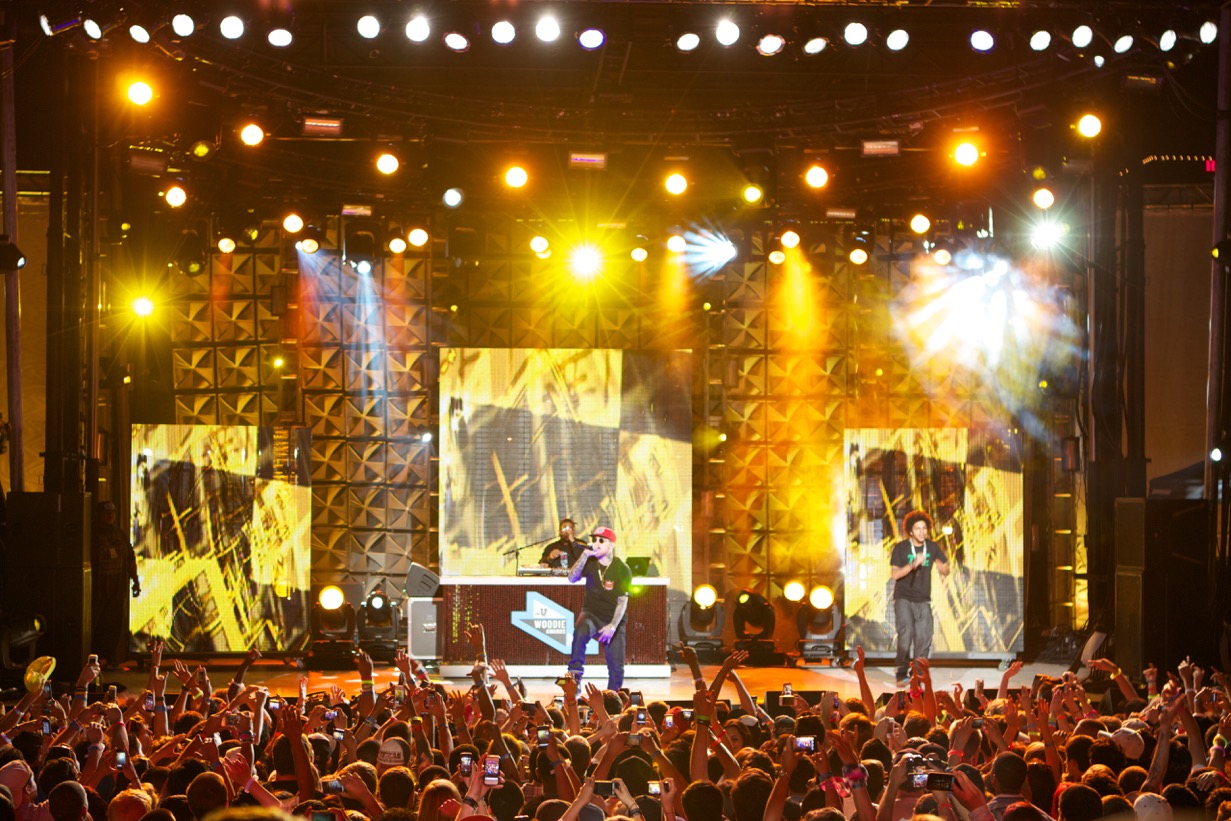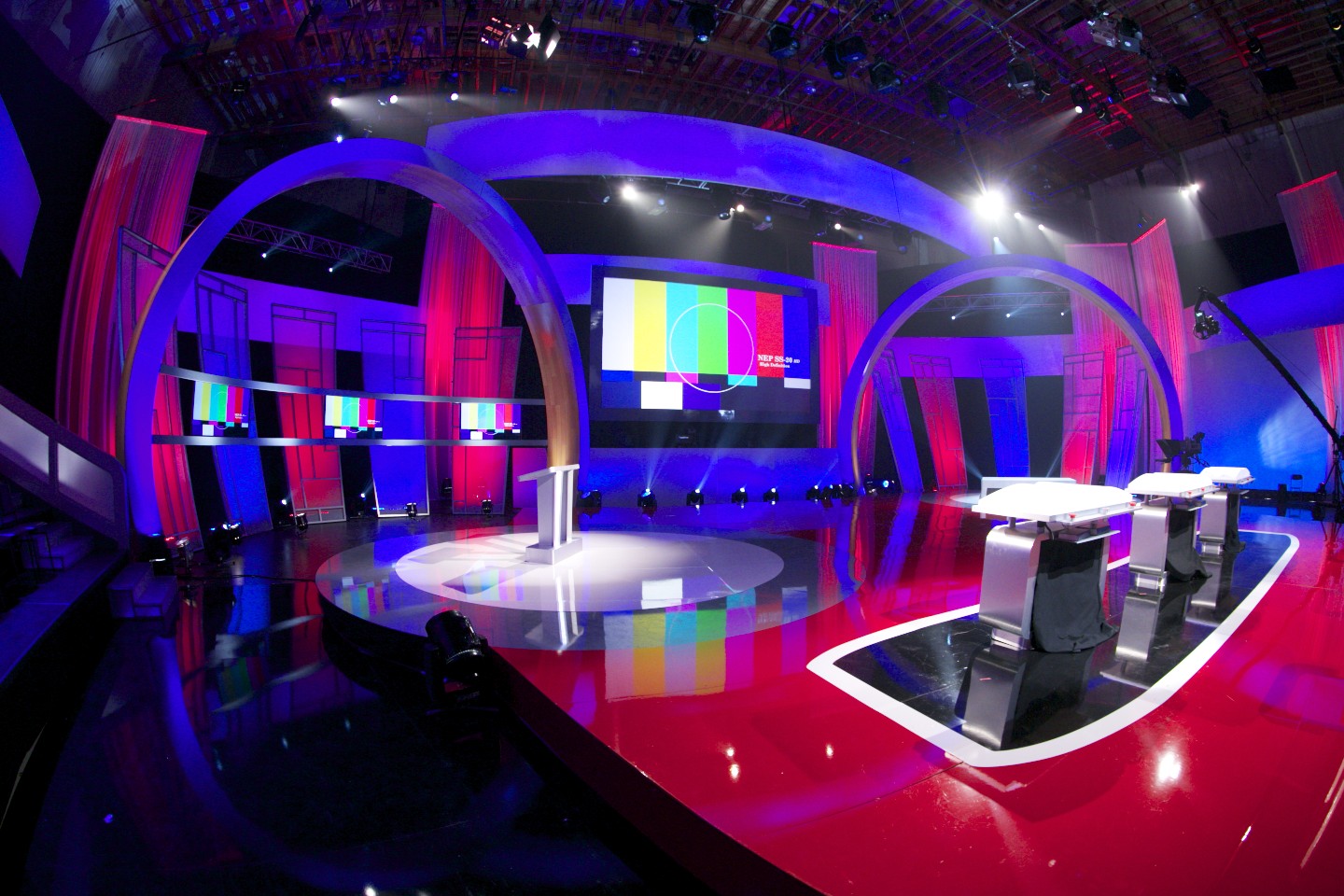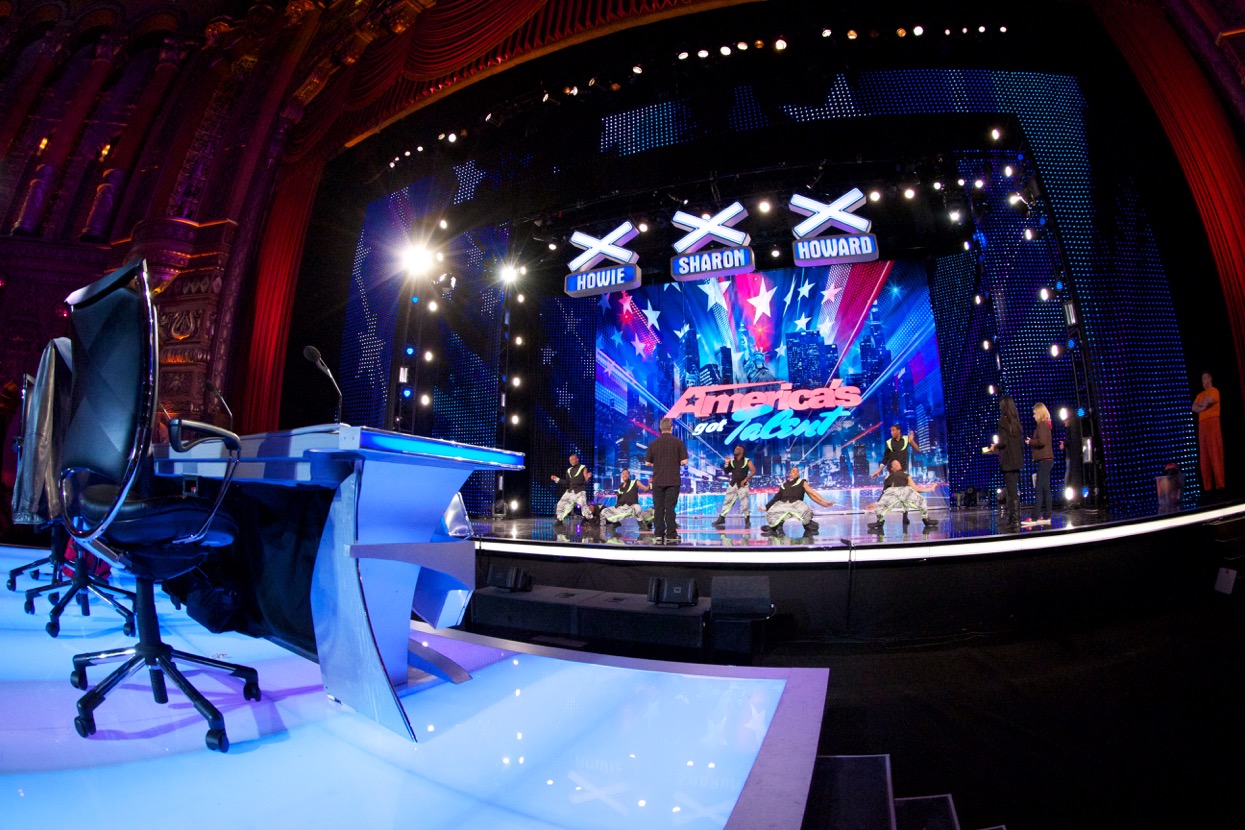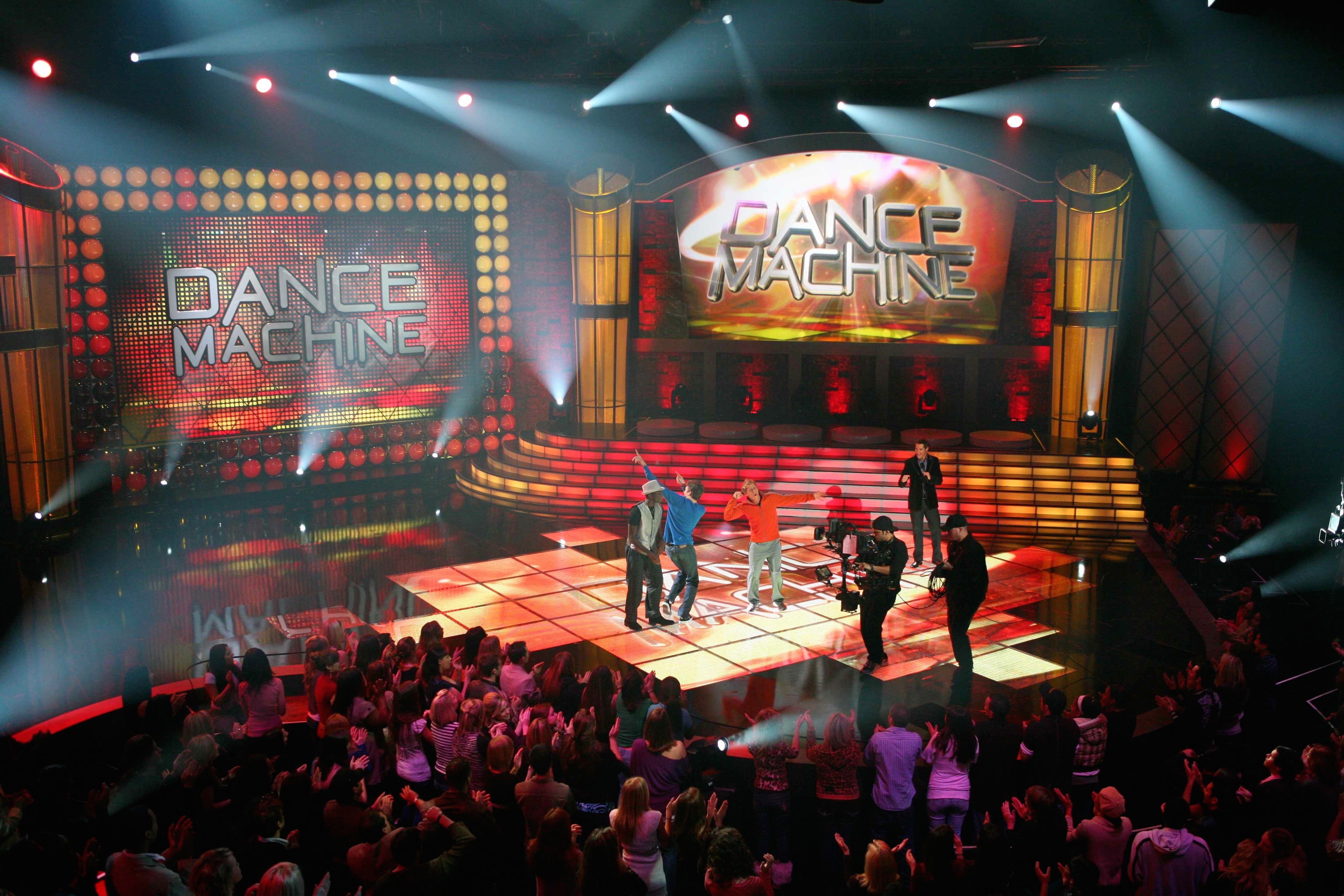Matt Ford: The Everything of Light
Posted on March 1, 2016
For this Emmy Award winner, lighting should do more than illuminate a TV production; to be truly successful it must also permeate every aspect of a program, from painting the background to underscoring the narrative to highlighting the talent. Only lighting that is this encompassing can, in his view, bring a show to life. Ford has demonstrated the power of his universal lighting approach in his groundbreaking work as LD for America’s Got Talent, as well as in his contributions to numerous other iconic TV programs like Celebrity Apprentice.
Ford’s grand view of lighting’s role has not blinded him to the interdependency of his work with all of the other creative efforts that go into a complete production. Widely admired and appreciated throughout the broadcast industry as the consummate team player, his conversation is peppered with words like “collaboration” and “symbiotic.” However, it’s his appreciation for the far reaching role of lighting that has allowed him to achieve an attractive balance between big scenic looks and intimate personal detail in his work.
We caught up to Ford in Woodland Hills, CA, where he’s president of Magic Lantern Creations, Inc., to talk about everything from lighting’s place in broadcast productions to the stunning Halloween display that he and his wife Lori Merkle create at their home every year.
A lot of lighting designers take their work home with them, but on Halloween you and Lori actually turn your home into a lighting design with a Haunted House Show. Can you tell us a little about that?
“The House At Haunted Hill, as we call it, originally started as a yard display with some basic yard decorations and projection effects. Much of the display used sound tracks from The Disney Haunted Mansion. After a few years of growing crowds we decided we wanted to create something that was our own. My wife came up with a story line and, in a year, we had The House At Haunted Hill.
“It’s not a lightshow, but rather more of a ghost play told through projection and other special effects. It’s very dark, in fact. We have incredible talent in our show, such as Neil Patrick Harris and Corey Burton (the narrator for the Disney Haunted Mansion’s Nightmare Before Christmas overlay), along with the Emmy-winning playwright Ed Valentine and Emmy-nominated composer Christopher Hoag. Even Disney Imagineering comes to see what we are up to as we really do some cutting-edge stuff. The important thing about our show, however, is not the technology, lighting, or sound; it’s the story. Those aspects are best described as vehicles which support the script.”
You have an incredibly long list of accomplishment is the TV field. So, in your view, what’s the most important contribution (or contributions) that lighting can make to the look of a TV program?
“Lighting is everything. It lights the talent, it paints the background. Nothing is more apparent when on occasion the network walks in to see the set in the middle of a load-in and there is concern on how the set is going to look, because they see everything in work light. I always counsel, ‘Wait until I’m done with it.’ The lighting is what brings it to life. Conversely, if you don’t have a good set it’s like painting on a bad piece of canvas. Set and lighting are incredibly symbiotic.
“Things are really dictated by the set. Much of what we do is dependent upon the quality of the set, and I’ve been fortunate to work with some of the best production designers in the business. Of course, the most important thing is the quality of the close-up, how the person looks and what is behind that person. When I design a show, it’s all about making sure it looks big on camera while making sure I have the tools on hand to insure the quality of the close-up, which is where you spend most of your time on camera anyway. As long as you balance both things equally, you will have a great show.”
On the subject of collaboration, can you give us a sense of how you as a lighting designer work with directors? What’s the secret to a good designer-director relationship?
“The biggest thing to remember is this is a collaborative business. Everyone here is here because they bring something to the table. What makes a production truly great is the melding of the minds, and this often starts with the director’s vision. You need to know how he or she is going to shoot it and you light to that.
“All this being said, I am never afraid to offer my opinion on what might look better, moving a camera over to get a better background, having someone turned to camera in such a way that a backlight does not scrape down the side of their face. The biggest thing is to be pleasant to work with and care about the production as a whole.
“What I bring to the table when a producer hires me is the totality of my experience and the fact that I care about the entire production, not just my piece of the pie. You want the show to be great in all areas. When you’ve been doing this as long as I have, you bring that experience with you and you become an asset. Above everything, it’s being supportive and flexible. And, of course, fun. I remember years ago the legendary designer Greg Brunton gave me some great advice. He said: ‘People remember two things about you. The second thing they remember is how good you are, the first thing they remember is if you are fun to work with.’”

You use quite a few moving fixtures in your broadcast work; are there challenges using this type of fixture for TV light because their movement may be hard to track on camera?
“I’ve never had a challenge with that. The moving light is really just a tool, and for the most part I can’t see how I would use them differently for a live event as opposed to television. The only thing I would say is with television lighting, in general, it’s all about control of the light, as opposed to live events which are much more forgiving.”
How important is front lighting in broadcast applications?
“Front light is incredibly important. Part of what gets me hired time and again is I can make a fantastic close-up. That close-up is where the money is both literally and figuratively. That is what the talent cares about most and rightly so, and that’s all front light. If an artist is not happy with how their close-up looks, believe me you hear about it right away. My most recent show was Best Time Ever With Neil Patrick Harris for NBC, and a couple weeks into it Neil came up to me and thanked me for ‘making his eyes pop.’”
What do you think of LED stage lighting? Can it replace incandescent fixtures?
“I primarily use LED to light the set and backlight the audience. Really the only time I use it to light faces is for close-up such as a quick shot of a host in the audience and you need to bring in a LED light panel in a stun gun type fashion. I know there are LED products for front light for long throws, but I’ve never had the opportunity to use them. Will it ever be able to replace a 5K Fresnel? Who knows? For me they would have to be the same price as an incandescent fixture to make it worth my while from a budgetary perspective.”
It seems like there are more cues built into TV program lighting today? What are your thoughts on that?
“I’m more of an advocate of having a few strong cues that you have spent time on rather than a bunch of sloppy ones because you didn’t have the time.”

When you get a project to light a TV program, where do you begin? Is there a place you always start at?
“For me it starts with the set renderings and a conversation with the executive producer to understand their vision. Between those two I begin to wrap my head around the thing.”
In general terms, how do you get inspired? Long walks? Music?
“Much of what I decide to do starts with the set renderings. This starts a chain of thought as to how I am going to approach the show. I would definitely say music is my main motivation. Pink Floyd and David Bowie always do it for me. From about the age of nine, I would visualize lighting when I would listen to music and that continues today. Before I landed in television I wanted to be a concert lighting designer, so music really has a direct connection to my design motivation.”
Changing gears for a moment — early in your career you worked at various capacities on tours for stars like Whitney Houston and Diana Ross. What was the biggest learning experience you had during that period? Was there a point where things clicked and lighting design suddenly made more sense to you?
“That is a fantastic question. Quite possibly, my biggest lesson learned was when I was touring for Bob Seger. We loaded into a college arena somewhere in the Southeast – for the life of me I can’t remember where! I was working as the lighting programmer and lighting director. In those days I tended to be more concerned with the overall lighting rig. We got into the show and quickly discovered the spot that was dedicated to the bass player was significantly darker than the rest. After the show, I was called backstage and my butt was practically handed to me by the bass player. I don’t know why it hadn’t dawned on me before, but it finally clicked that you must always pay attention to how the talent looks first. Everything after that is secondary.”
What do you design in today?
“I use Vectorworks, but I rarely draft my own plots these days. I work with Dirk Opteynde, who does a fabulous job with that.”
You won two Emmys for your work as a lighting programmer and lighting director for the for the Academy Awards ceremonies; what was that experience like?
“That was fantastic. I was working for Bob Dickinson, who was the lighting designer. Bob was one of the first people to acknowledge the programmer as part of the creative team, so when he submits a show for an Emmy, the programmers are on that submission.”

What do you regard as the highlights or special milestones in your career?
“I’ve been lucky to have a few, and I hope I have only scratched the surface. Probably the two most exciting projects were lighting the National Christmas Tree in Washington, DC, and a special Joint Session of Congress called together in response to the September 11, 2001, attacks. Most recently, one of my biggest highlights was designing Best Time Ever With Neil Patrick Harris for NBC.”
Who were the big influencers in your career?
“Bob Dickinson was a big influence. He was the catalyst for my moving to L.A. from Dallas to program for him. Even bigger influences were Kieran Healey and Simon Miles. Both were absolutely instrumental in supporting my design career. What most people don’t realize is established designers, in many ways, hold the keys to moving up the ladder. They often get double booked and need someone to cover for them. It’s through their recommendations and trust with their clients that you get the opportunities to sit in the chair. Both Kieran and Simon afforded me those opportunities, and I would not be where I am today without their support and mentorship.”
What’s the best and worst thing about being a lighting designer?
“The best thing is that you are getting paid to make pretty pictures. What’s not to love about that? Like any job, there are challenges, but I wouldn’t qualify anything as being the ‘worst’ part. I love what I do.”
You’ve done work for a lot of famous actors, musicians and other performers. Are there any of those people who, looking back, you think would have made a great lighting designer if they went into this field?
“Neil Patrick Harris. He is the opposite of ‘Jack of all trades – Master of none.’ He masters everything he does. I have no doubt between his artistic vision, drive, intuition and personality, he would be completely successful.”
Along those lines, what are the most important qualities that a person needs to be a great LD?
“You need to have a great eye and be fun to work with.”
How would you like to be remembered as a lighting designer?
“It’s not my design I want to be remembered for or the shows I did. I want to be remembered as someone who treated the people around me with kindness, grace, humor and humility. I want to be remembered as thankful for the people who supported me in life and allowed me to be one of the lucky ones to walk this earth truly loving what I did for a living.”